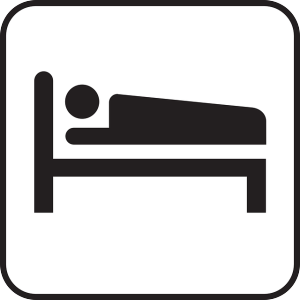Medical education is a major concern of the Postgraduate Medical Journal. Indeed the origins of the journal are in the need to provide medical graduates with a source of education after graduation that would keep them in touch with the goings on in the major centres of medical progress. A paper in the current issue of the journal highlights one of the more cutting edge aspects of medical education today. Social media is a huge, huge resource of information, interaction, teaching, debate and conversation about medicine, and medical education that is starting to influence the medical world in powerful ways.
From the social movements to improve care like NHS Change Day or the #hellomynameis campaign, or the fantastic blog with up to date critique of new evidence at St Emlyn’s to the full blown, immersive experiences of a conference like SMACC, it is clear that social media are here to stay and will play an increasing role in how medical education is delivered and backed up. The paper explores some of the debate around social education in medicine, and encourages educators not to view social media as a way to avoid engaging with students and in particular, readers are reminded that a cornerstone of medical education remains very much in the real world: the face to face encounter with a patient.
If you have come to this blog via a route that doesn’t involve social media of some sort – then you should definitely read, and explore the resources mentioned by the authors, and those I have highlighted above. But if you – and I think most reaching this page are – familiar with SoMe – it would be worth thinking a bit more about that very intimate time – the patient encounter.
At our hospital we have recently had our first year clinical students go through a series of first experiences – first day on the wards, first examination of a patient’s respiratory system / abdomen / cardiovascular system and so on…
One of my colleagues had to borrow my stethoscope to demonstrate examination skills that he no longer uses on a regular basis… and the familiar debate about why we are teaching medical students inaccurate techniques to try to elicit signs that were often first described in end stage disease before modern medicine had really got going. Des Spence put forward this view in 2012 – and lots of heat was generated thereafter.
My feeling on the subject – especially in the context of medical education, is that the acutal examination skills – while important ( the dawning of realisation among a group of medical students when discussing the physics of the generation of breath sounds – the pathology underlying pneumonia and pleural effusion – and hence the clinical signs just observed always give me a buzz) are probably secondary to all of the other learning that goes on in that encounter – the meta learning if you like.
The act of examining the respiratory system, for example is very intimate compared with everyday life. ‘Just remove your shirt sir’ ‘May I see your hands?’ ‘I’m just going to feel in your neck – it may be uncomfortable’ ‘I’m just going to tap you on your chest’ Seriously? In what other setting could you do this without serious consequences? To be able to inspire confidence, gain trust, demonstrate caring, understanding, and yet reach even a vaguely logical conclusion from the information gained from poking and prodding another human is quite something, and develops far more than just medical knowledge.
You may learn nothing from examining the chest that can’t be garnered in other ways, you may get more from an echocardiogram than you will ever get from examining endlessly for a slow rising pulse BUT the process of meeting hundreds of patients, gently asking them to bend to your touch, follow your instructions, and the very act of connecting physically with many different people from many different walks of life, I am convinced, play a huge role in instilling the values that underpin medical practice.
The knowledge that underneath all the trappings of life we are all contained within the same fragile human frame, the human connection made through physical touch, and the wild variation in styles of communication that are neccessary to achieve any sort of progress in a consultation – not just turn out some well worn lines… All of these cannot be achieved by simply filling in a request for a chest x-ray or a CT scan.
Physical examination – like textbooks of old – may seem like a relic of another age when compared with current trends in medical technology and diagnosis, but, the unrecognised learning from these encounters is hugely valuable, and we should be careful to ensure that in our rush to get technology into every aspect of medicine, that we don’t ignore the greatest resource we have for learning medicine – as @SirBill would have had it – we still need to head for the bedside.
